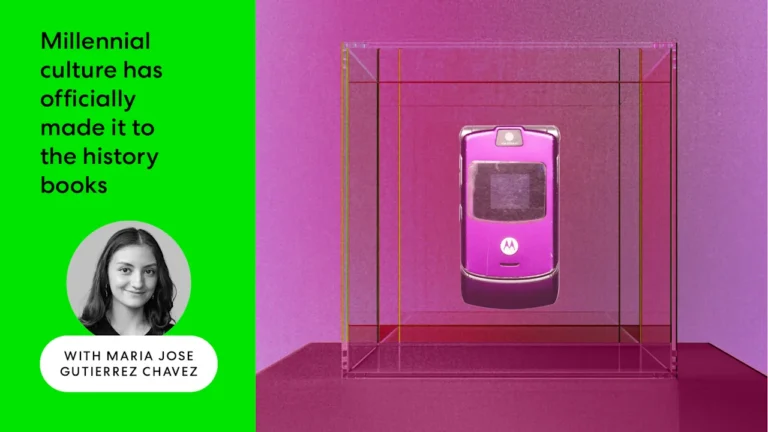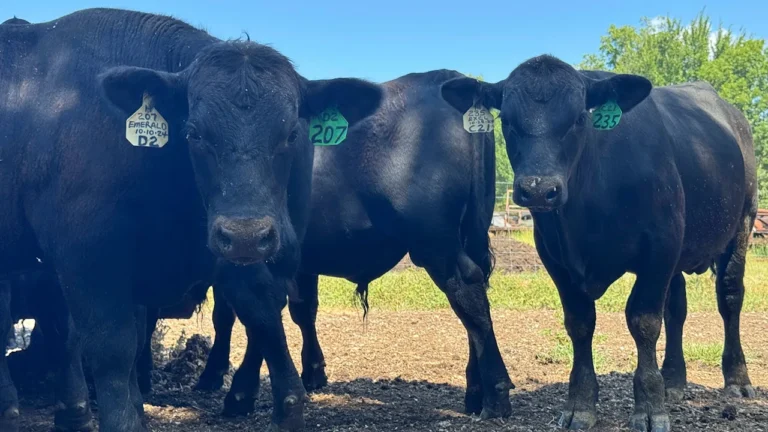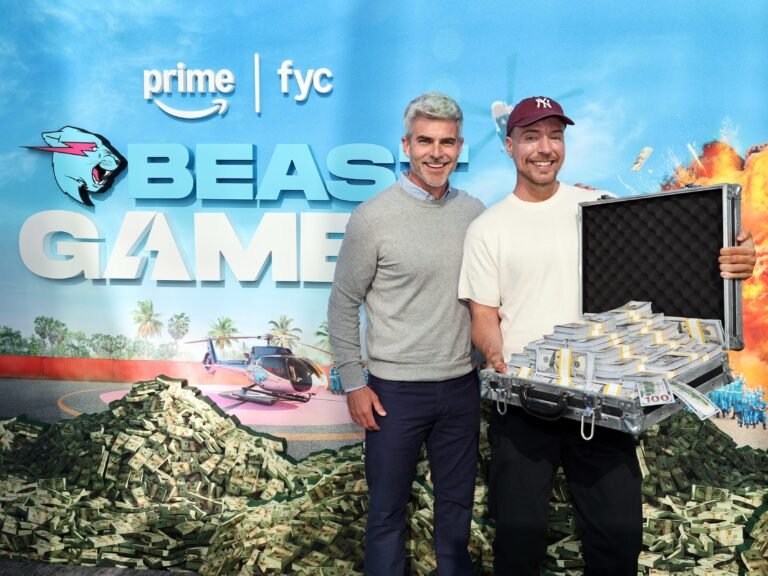
In an age obsessed with the new and the next, creating sustained business success is an art form but a hard craft to master. The headlines tell the story. Starbucks is on its third CEO in five years. HBO changed its name, then changed it back again. Nike is slowly returning to form after three years of share decline.
As an Innosight report wisely noted almost a decade ago, “Half of S&P 500 companies are expected to be replaced over the next 10 years.”
So, when results falter, how do legacy brands transform? What separates those that rise again from those that fade away? To find out, we spoke to CMOs from a rare group of brands that have won the hearts of multiple generations. What follows is a distilled playbook plus sharp provocations to guide your own transformation.
1. Only the sharp survive
The longer the legacy, the sharper a brand must be in consumers’ minds. But time blurs brand meaning. What starts as a clear idea becomes diluted by layers of well-intentioned additions until the brand loses its edge.
As Jonathan Mildenhall, CMO of Rocket, a lender with 40 years of mortgage expertise, puts it: “One of the hardest disciplines to practice is the company-wide skill of corporate editing. The truth is that over time and across markets, people add things on (new and new and new) but no one ever takes the time to sunset the old. That’s how brands become bloated and lose their focus.”
At Starbucks, CEO Brian Niccol famously cut 30% of menu items, not just for efficiency, but to get “Back to Starbucks.” The aim? Sharpen the brand’s identity by subtracting what no longer served.
Question: What could your brand let go of to become sharper in people’s minds?
2. Drive a reappraisal, not a reinvention
Reposition at your peril. Reinvention is risky; reappraisal is powerful. The most successful
transformations we heard about began not by changing the brand’s fundamental role, but by finding contemporary ways to express its enduring truth.
As PepsiCo CMO Mark Kirkham explains, “Change the how, but don’t change the what.”
PepsiCo’s core benefits of instant refreshment, enjoyment, and fun haven’t changed. But with the return of the Pepsi Challenge, the brand tapped into deep memory structures to drive trials of Pepsi’s zero-sugar variants and create cultural reappraisal.
At Calvin Klein, CMO Jonathan Bottomley revived the brand’s cultural resonance without
moving it “off.” Strategic partnerships with figures like Jungkook and Jeremy Allen White
brought the brand’s key products and advertising iconography to a new generation. As
Bottomley says: “The path to getting the brand back on top was to make that iconic impact on culture feel very contemporary.”
Question: What cultural communities could viscerally connect with your brand’s core equities to drive a reappraisal?
3. History offers a map to the future, aka there is gold in the well
Treated with intention, legacy isn’t baggage; it’s a strategic advantage. A brand’s past is a pattern-recognition engine, a repository of what’s worked and what hasn’t.
When Jonathan Mildenhall took over as Coca-Cola’s VP of global advertising, his first move was to dive into the archive. “Ninety percent of the headwinds that Coca-Cola was facing had been dealt with in the past, by the brilliant marketers that had come before,” he explains. That insight led to the “Open Happiness” campaign, which reignited the brand’s connection with a new generation.
At Bacardi, CMO Ned Duggan followed a similar path. By revisiting past activations and
aligning them with contemporary culture, he found fresher versions of what had already
succeeded. “There are very few new ideas on old brands that someone hasn’t thought of,” says Duggan. “You can either find the ones that worked and make them fresh or roll the dice.”
Question: When was the last time you went back to the well to find your brand gold?
4. Transformation is an inside job.
Brands don’t transform by changing ads. They transform by changing organizations.
Legacy brands often chase external reinvention through new logos and campaigns, before aligning internally. But if the brand evolution doesn’t live inside the business, impacting culture and commercial planning, then it won’t land outside it. The key is to make the brand genuinely valuable for other leaders and the challenges they are facing.
At the BBC, Chief Brand Officer Charl Bassil views brand as a key internal decision-making tool: “The brand is a key lens through which to arbitrage decisions.” It speeds up execution by resolving internal tensions.
At Bacardi, the brand “mind map” became a daily reference point. Duggan recalls: “It guided everything. We looked at it every day.” Internal clarity built external coherence.
Question: How can you give your brand an influential role in decision making across your business?
5. Customers give you courage
Transforming a legacy business means facing internal resistance. Every step forward comes with tension. What to keep, what to change. It’s a tightrope walk. “Every year I’m told ‘you can’t do that, it will hurt TIME’s brand,’” says TIME Inc. Editor-in-Chief Sam Jacobs. “Yet we have to take risks in informed ways and that does make a lot of people anxious.”
That anxiety is normal. Informed risk is non-negotiable. But bringing in customer voices can turn hesitation into momentum.
At Visa, former CMO Lynne Biggar led a sweeping listening tour. She and her team spoke directly with thousands of people. “We didn’t sit in our offices and get a research company to do it all,” she says. They talked to customers and noncustomers. Small business owners. Government officials. These voices became a North Star. They gave clarity. They inspired confidence. And they helped Visa elevate its brand across consumer payments, B2B money movement and new payment flows while imbuing a broader purpose.
Customer insight didn’t just inform the work. It gave the team the courage to act. And the organization the confidence to follow.
Question: Are you listening widely enough to act bravely?
6. Soft power builds lasting change
Startups run on founder energy. Legacy brands require a different mode of leadership.
Transforming an iconic brand isn’t about charging in. It’s about building coalitions, editing wisely and earning trust. “You need to come in ready to edit, not to conquer,” says Duggan.
When you’re trying to evolve an organization of tens of thousands, many of whom have
devoted decades to the very things you’re now seeking to change, it’s not brute force that prevails, but the uniting influence of soft power.
Charl Bassil sums it up: “This is not the job for heroes. It is a job for team-builders and translators…but the pleasure of breathing new life into something that you find meaning in, and that you love, makes the job that much more fulfilling and meaningful.”
Question: Are you building an internal culture that can sustain transformation? Or one that depends on your personal energy?
Transformation is not a one-off firework—it is a constant campfire
“Icons need to feel owned and distinctive, but they also need to be constantly updated,” says Calvin Klein’s Bottomley, reflecting on what it takes to stay on top in the world of fashion. It’s perfectly phrased advice for all brand icons, whether in fashion, food, finance, or beyond.
Icons are in constant motion. For the CMOs of tomorrow’s icons, the transformation work is never done. Many companies can create a single pop of cultural relevance through a one-off campaign. The difference with the great “stay-ups” is that they inspire the entire organization.
True transformation means tending a constant campfire. It means building and sustaining momentum, not relying on occasional big fireworks.
Because staying on top means never standing still.
Neil Barrie is global CEO and cofounder and Sara Tate is transformation partner at
21st Century Brand.


